Overview
 Climate Recovery has previously employed the Swedish Statens Provningsanstalt (SP Certification) to perform measurements of the CR Duct sound-absorbing properties. Recently, complimentary measurements were performed with the help of Swegon, a Swedish air-handling manufacturer. All current measurements confirm those previously performed, though to a more definitive degree. All measurements were performed on the 1/3rd octave band level. The lowest sound damping values of all measurements were chosen.
Climate Recovery has previously employed the Swedish Statens Provningsanstalt (SP Certification) to perform measurements of the CR Duct sound-absorbing properties. Recently, complimentary measurements were performed with the help of Swegon, a Swedish air-handling manufacturer. All current measurements confirm those previously performed, though to a more definitive degree. All measurements were performed on the 1/3rd octave band level. The lowest sound damping values of all measurements were chosen.
CR Duct reduction rate
Sound transmitted through the walls of CR Ducts and corresponding round sheet metal ducts have similar values. The table below shows the results of CR’s lab tests. The maximum sound level transferred from fans and air-handling units, specifically for dimensions 125 to 315, into rooms where a full-length CR Duct has been installed is lower than 25 dBA. From these values, we can infer that considerations for acoustic calculations are unnecessary when using CR Ducts. CR Duct sound reduction goes in both directions, from duct into room and room into duct.
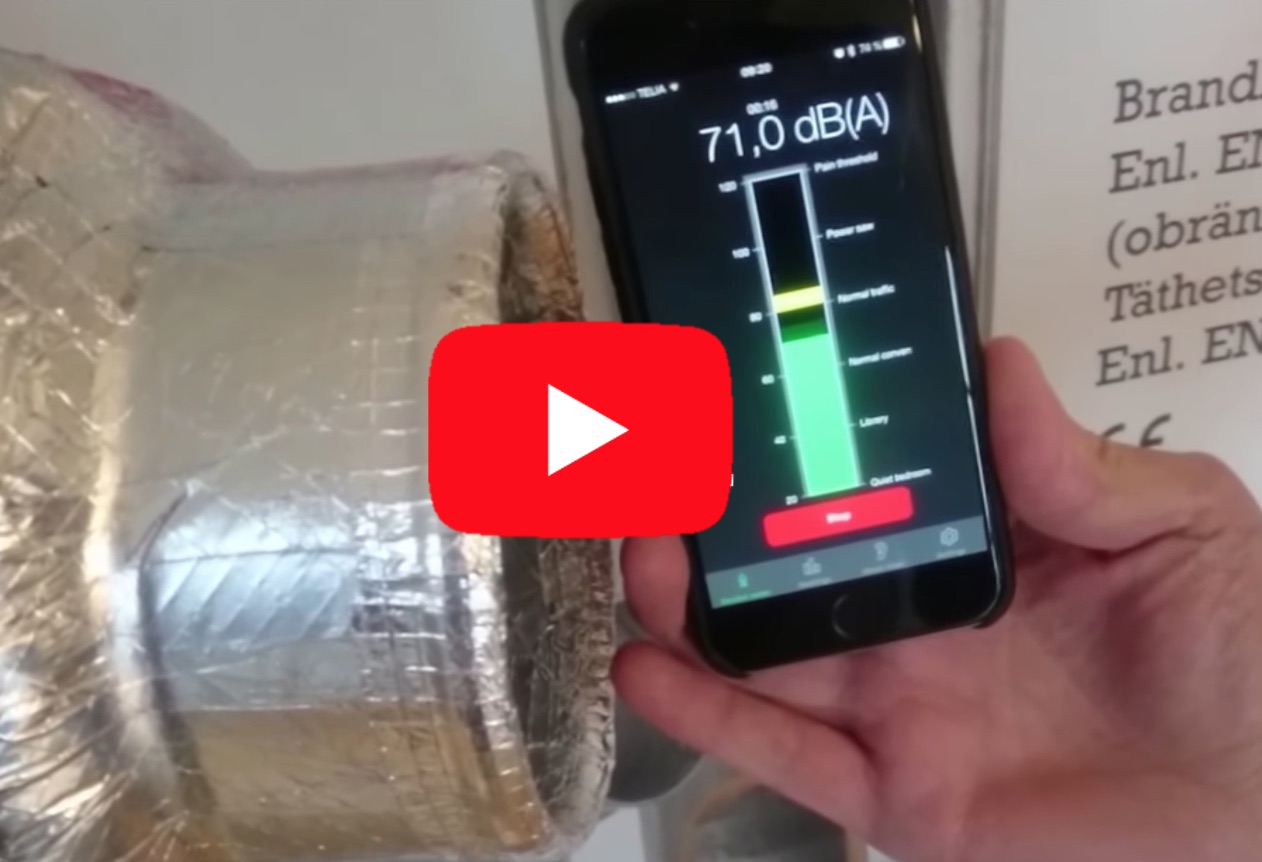
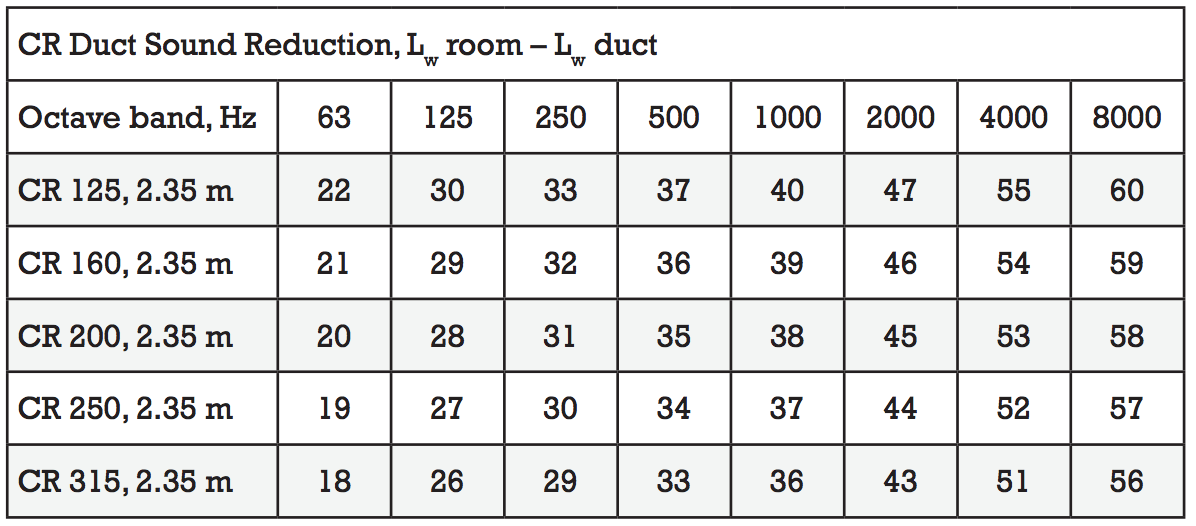
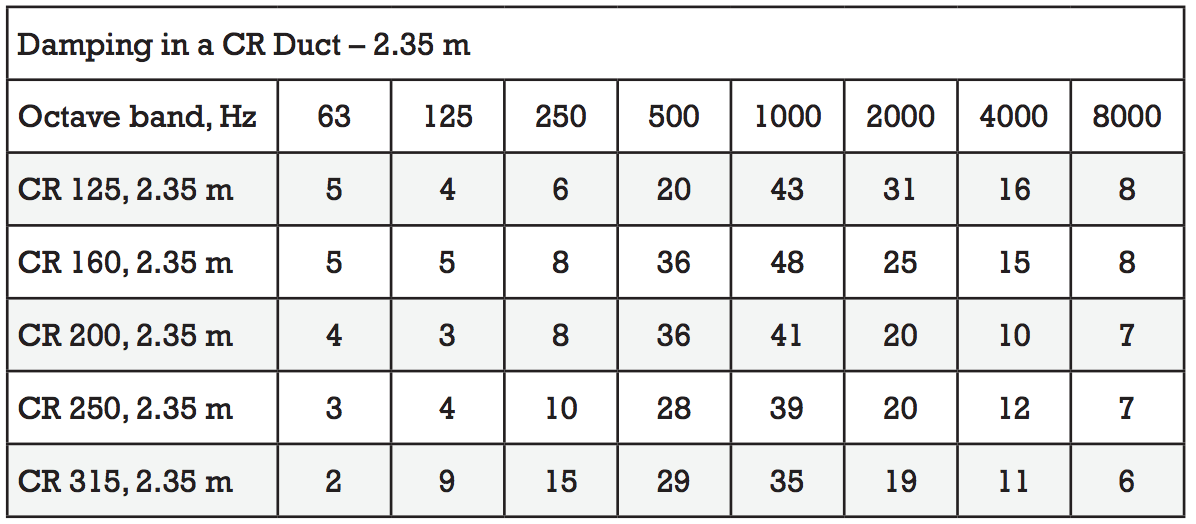
As the above tables demonstrate, CR Ducts possess noticeable damping in lower frequencies and excellent damping in commonly heard frequency levels.
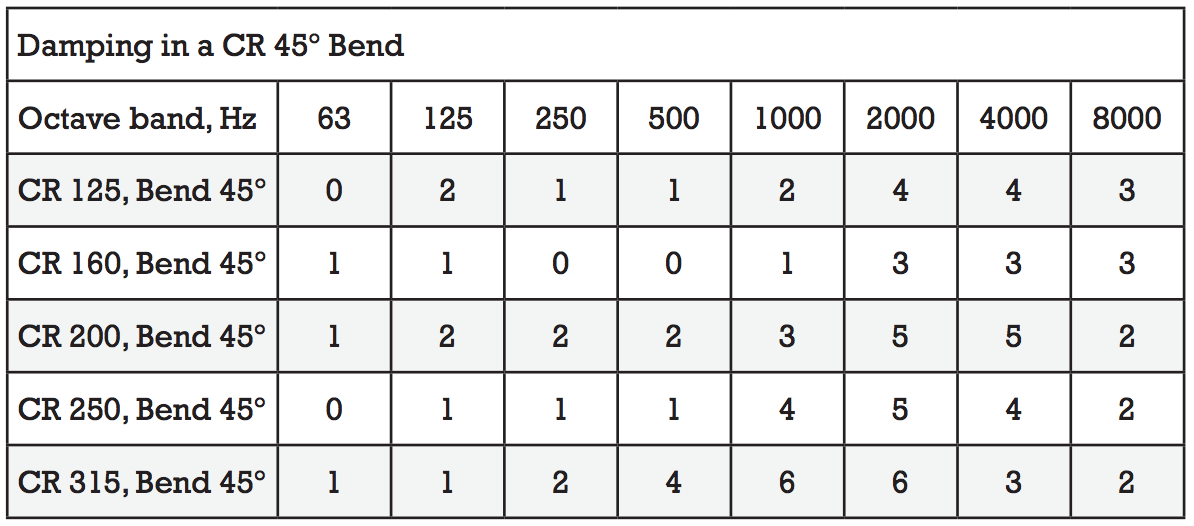
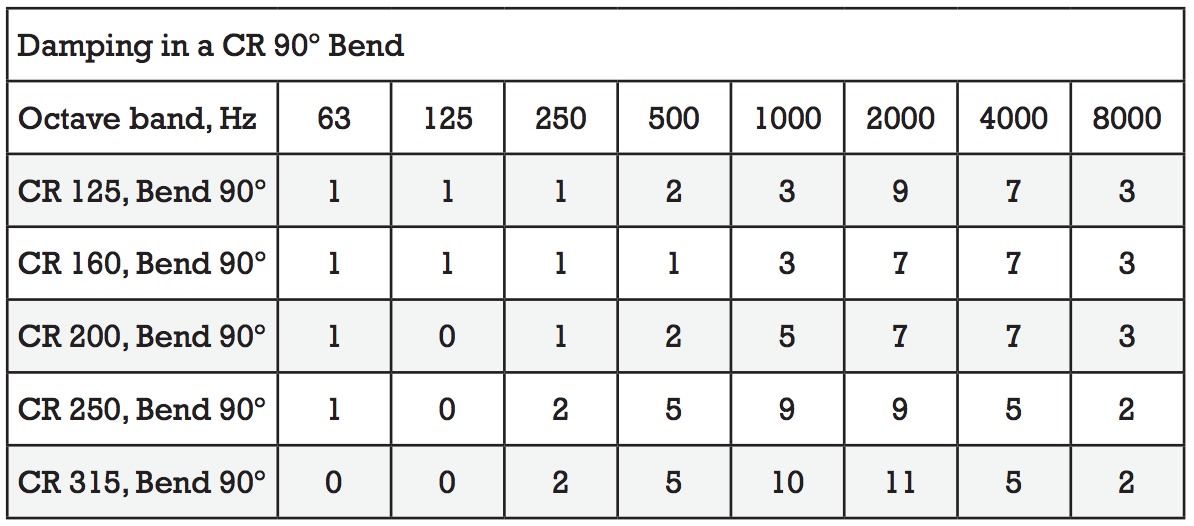
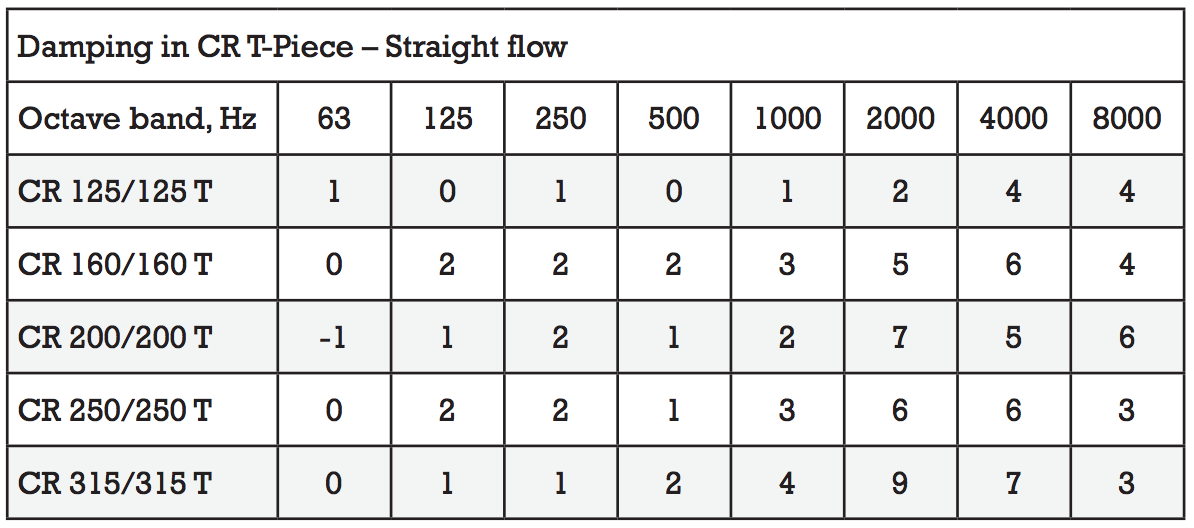
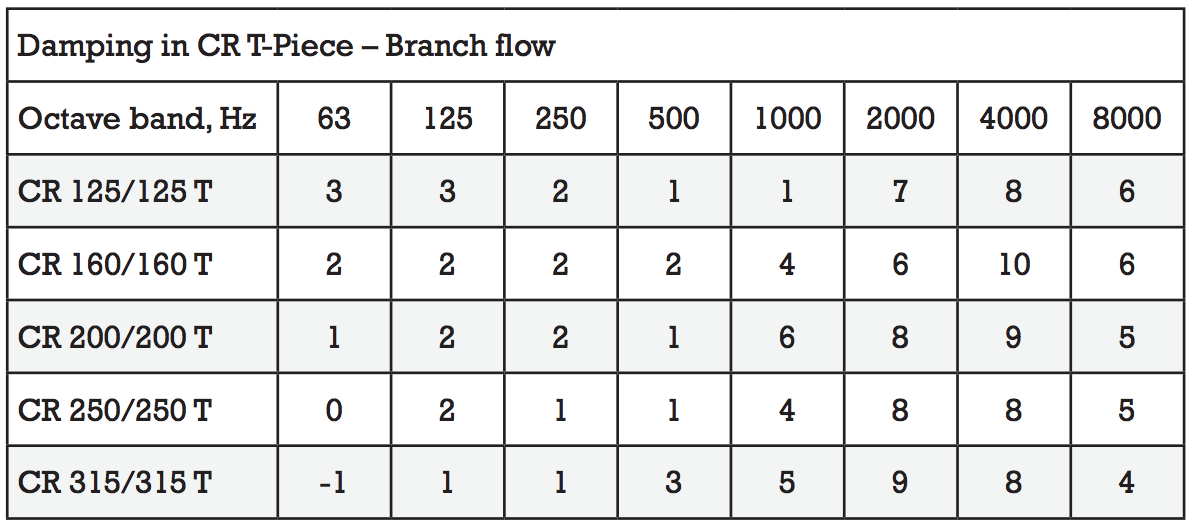
The overwhelming difference comes from the CR Duct.
Room-to-room transfer
What is apparent from the tables above is that the damping qualities through duct walls, as well as along the internal duct length, of CR Ducts function in the frequencies with which we commonly notice and function: 500 Hz to 4000 Hz. 2.35 meters of CR Duct works to a similar extent as a market standard sound damping device.
Sound calculation
A simple estimate of the sound damping in a CR Duct System can be done by adding the respective component damping values at all frequencies, performed from source to outlet. By subtracting these damping values from air-handling unit or fan sound levels, you can obtain the sound level that exists at the connection to the outlet. If exact projections and measurements will be performed for your installation, we request that acoustic professionals use the values above.
